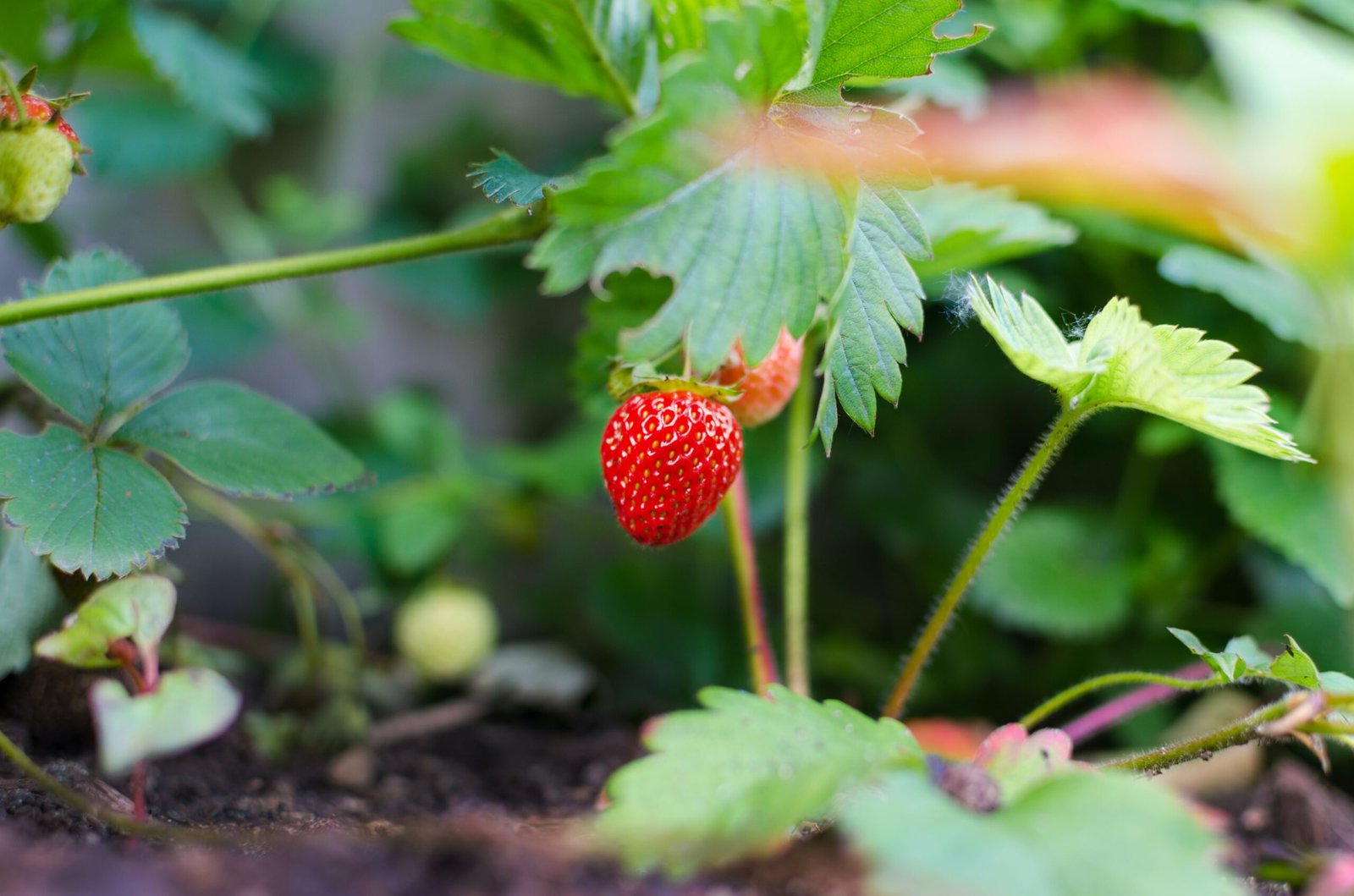
Did you know that you can maximize the growth of your zucchini plants by using a vertical method in tomato cages? By growing zucchini vertically, you not only save space in your garden but also promote better air circulation and prevent diseases. The sturdy tomato cages provide the necessary support for the zucchini plants to grow upright, allowing them to receive optimal sunlight and reducing the risk of rotting. In this article, we will explore the benefits of the vertical method and provide you with practical tips for successfully growing zucchini in tomato cages. Say goodbye to sprawling zucchini plants taking over your garden, and say hello to a more efficient and productive way of growing this versatile vegetable.

Benefits of Growing Zucchini Vertically
Maximizing Space
When you grow zucchini vertically using tomato cages, you can effectively maximize the space in your garden. By training the plants to grow upward instead of sprawling along the ground, you can save valuable garden real estate. This is particularly beneficial for gardeners with limited space or those who want to make the most of every square foot in their garden.
Improved Air Circulation
Vertical growth of zucchini plants allows for better air circulation around the foliage. When the leaves have more space and are not tightly packed together, they can dry quickly after rain or watering, reducing the risk of fungal diseases such as powdery mildew. The improved air circulation also helps to prevent plant stress and promotes overall plant health.
Easier Harvesting
One of the significant advantages of growing zucchini vertically is the ease of harvesting. When the plants are trained to grow upwards, the fruits are more accessible and visible. You won’t need to spend countless minutes searching through sprawling vines to find hidden zucchinis. Instead, you can simply walk down the row of tomato cages and harvest your ripe zucchinis easily.
Reduced Disease and Pest Problems
Growing zucchini vertically can also help to reduce the incidence of diseases and pest problems. When the foliage is off the ground, it is less likely to come into contact with soil-borne diseases or pests. Additionally, the improved air circulation helps to deter pests such as aphids, mites, and cucumber beetles. By implementing the vertical growth method, you can create a healthier and more resilient zucchini crop.
Selecting the Right Tomato Cage for Vertical Zucchini Growth
Choosing the Appropriate Size
When selecting a tomato cage for vertical zucchini growth, it is crucial to choose the appropriate size. Look for cages that are tall enough to support the vertical growth of your zucchini plants. The height of the cage should be at least 5 to 6 feet to accommodate the mature height of zucchini vines. Additionally, consider the diameter of the cage, ensuring that it provides enough space for the zucchini plant to grow without feeling cramped.
Ensuring Sturdiness
Sturdiness is another important factor to consider when selecting a tomato cage for vertical zucchini growth. Remember that the zucchini plant will rely on the cage for support, so it needs to be strong enough to withstand the weight of the plant and the developing fruits. Look for cages made of durable materials such as galvanized steel or heavy-duty plastic. Avoid flimsy or weak cages that may collapse under the weight of mature zucchini vines.
Considering Material Options
Tomato cages for vertical zucchini growth are available in various materials, each with its own benefits and drawbacks. Metal cages, such as those made from galvanized steel, are sturdy and long-lasting but may be more expensive. Plastic cages are lightweight and cost-effective but may not be as durable as metal. Consider your budget, gardening style, and the availability of materials when choosing the right material for your tomato cage.
Preparing the Zucchini Plant for Vertical Growth
Selecting the Ideal Variety
Before you begin growing zucchini vertically, it is essential to select the right variety. Look for zucchini varieties that are known for their compact and bushy growth habits rather than those with sprawling vines. Compact varieties are better suited for vertical growth as they require less space and can be trained more easily. Some recommended varieties for vertical zucchini growth include Black Beauty, Raven, and Patio Star.
Starting Seeds Indoors
To get a head start, you can start zucchini seeds indoors before transplanting them to the garden. Start the seeds in seed trays or pots about 3-4 weeks before the last frost date for your area. Use a well-draining seed starting mix and place the trays in a warm, sunny location or under grow lights. Keep the soil consistently moist and provide adequate ventilation to prevent damping off or fungal diseases.
Transplanting Seedlings
Once the danger of frost has passed and the seedlings have developed several leaves, it’s time to transplant them into your garden. Prepare the soil by loosening it with a garden fork and adding compost or well-rotted manure to improve fertility. Carefully remove the zucchini seedlings from their trays, taking care not to disturb the delicate roots, and plant them at the base of each tomato cage. Space the cages according to the specific requirements of the chosen zucchini variety.
Pruning and Training Techniques
To ensure vertical growth and maximize space, it is essential to employ proper pruning and training techniques. Start by removing any lateral shoots or side branches that may appear along the main stem. These shoots can divert energy away from vertical growth and lead to excessive foliage. As the plant grows, gently train the main stem to grow upwards using soft twine or plant ties. Regularly check for any additional lateral shoots and promptly remove them to maintain the desired vertical growth pattern.
Preparation of Tomato Cage for Vertical Zucchini Growth
Properly Anchoring the Cage
For optimal stability, it is important to properly anchor the tomato cages in the ground. Before positioning the cages, dig a hole deep enough to accommodate the lower part of the cage legs. Place the cage in the hole, making sure it is level and upright. Backfill the hole with soil, firmly packing it around the legs to secure the cage in place. Repeat this process for each tomato cage in your garden.
Positioning the Cage in the Garden
When positioning the tomato cages in the garden, consider the plant’s sunlight requirements and the spacing between each cage. Choose a location that receives full sun for most of the day, as zucchini plants thrive in warm and sunny conditions. Additionally, provide sufficient spacing between each cage to allow for proper airflow and to prevent the plants from shading each other. A spacing of at least 3-4 feet between each cage is recommended.
Securing the Cage to Support Vertical Growth
To ensure the tomato cage provides adequate support for the zucchini plant’s vertical growth, it is important to secure it properly. As the plant grows, gently guide the main stem through the openings of the cage, allowing it to weave around and be supported by the cage. Monitor the plant and make any necessary adjustments to ensure it stays upright and properly supported. Regularly check for any signs of stress or instability and reinforce the cage if needed.

Planting Zucchini in a Tomato Cage
Digging the Planting Hole
Before planting your zucchini seedling into the tomato cage, dig a planting hole that is deep enough to accommodate the roots. The hole should be slightly wider than the container the seedling is currently in. Gently remove the seedling from its container, gently loosen the root ball if it is tightly bound, and place it into the hole. Backfill the hole with soil, gently firming it around the roots to ensure good soil-to-root contact.
Adding Organic Matter to Improve Soil
To promote healthy growth and productivity, consider adding organic matter to the soil before planting the zucchini seedling. Organic matter, such as compost or well-rotted manure, improves soil structure, enhances drainage, and provides the plant with essential nutrients. Mix the organic matter into the planting hole, ensuring it is well-blended with the existing soil.
Placing the Zucchini Seedling into the Cage
Once the planting hole is prepared, carefully lower the zucchini seedling into the tomato cage. Position the seedling in the center of the cage, ensuring that the roots are well-distributed and not cramped. Use your hands to gently fill in any gaps around the seedling with soil, firming it gently to provide adequate support.
Mulching and Watering
After planting the zucchini seedling in the tomato cage, apply a layer of organic mulch around the base of the plant. Mulch helps to retain soil moisture, suppresses weed growth, and keeps the soil temperature consistent. Furthermore, mulching can reduce the risk of soil-borne diseases by preventing water splashing onto the foliage. Water the plant thoroughly after planting, and continue to provide regular watering throughout its growth to keep the soil consistently moist.
Caring for Vertical Zucchini Plants
Watering Requirements
Proper watering is crucial for the health and productivity of vertical zucchini plants. Zucchini plants require consistent moisture but should not be over-watered, as excessive moisture can lead to root rot and other fungal diseases. Monitor the soil moisture levels regularly and water the plant deeply when the top inch of soil feels dry. Aim to keep the soil consistently moist, but not waterlogged. Mulching around the base of the plant helps to retain moisture and reduce evaporation.
Fertilizing the Plants
To promote vigorous growth and maximize yields, it is important to fertilize vertical zucchini plants regularly. Use a balanced, slow-release fertilizer or organic compost to provide a steady supply of nutrients throughout the growing season. Follow the manufacturer’s instructions for application rates and timings. Avoid overfertilizing, as this can lead to excessive foliage growth at the expense of fruit production.
Managing Weeds
Weed management is an essential aspect of caring for vertical zucchini plants. Weeds compete with the zucchini plants for water, nutrients, and sunlight. Regularly inspect the area around the tomato cages and remove any weeds that emerge. Mulching can help suppress weed growth, but it is still necessary to keep an eye out for any persistent weeds or grasses that may infiltrate the mulch layer.
Monitoring for Pests and Diseases
Vertical zucchini plants are still susceptible to pests and diseases, albeit to a lesser extent compared to their sprawled counterparts. Regularly inspect the plants for any signs of pest infestation, such as holes in the leaves, chewed fruit, or the presence of insects. Consider using organic pest control methods such as handpicking pests, introducing beneficial insects, or applying organic pest sprays. Additionally, monitor the plants for any signs of disease, such as wilting, yellowing of leaves, or the presence of fungus. Promptly address any pest or disease issues to prevent them from spreading to other plants.

Training Zucchini Vines for Vertical Growth
Attaching Vines to the Cage
As zucchini vines grow, gently guide and attach them to the tomato cage using soft twine or plant ties. Avoid tying the vines too tightly, as this can restrict their growth and cause damage. Instead, loosely secure the vines to the cage at regular intervals, allowing them to grow and expand naturally. Regularly check the attachment points and make any necessary adjustments as the vines grow.
Pruning Excess Foliage
To maintain the desired vertical growth and improve airflow, it is beneficial to prune excess foliage from zucchini plants. Remove any side shoots or lateral branches that emerge from the main stem, as these can divert energy from vertical growth. Additionally, remove any damaged or diseased leaves to prevent the spread of diseases. Pruning should be done regularly throughout the growing season to encourage the growth of productive and healthy vines.
Encouraging Proper Growth and Support
To encourage proper growth and support, regularly monitor the zucchini vines as they develop. Check for any signs of stress, such as wilting or bending, and reinforce the tomato cage or other support structures if needed. As the plants grow taller, consider gently tucking the vines into the cage to prevent them from sprawling outward and taking up unnecessary space. Regular attention and care will help ensure the vertical growth of zucchini plants is successful.
Harvesting Zucchini from Vertical Tomato Cages
Recognizing the Right Time to Harvest
Knowing when to harvest zucchini is crucial to ensure you enjoy the best texture and flavor. Zucchinis are best harvested when they are young and tender, usually when they reach around 6 to 8 inches in length. Pay attention to the skin, which should be glossy and easily punctured with a fingernail. Once zucchinis become too large, they can become woody and less flavorful. Regularly inspect the plants and harvest the zucchinis as soon as they reach the desired size.
Harvesting Techniques
When harvesting zucchini from vertical tomato cages, using a sharp knife or pruners to cut the fruit from the stem is recommended. Hold the zucchini firmly and cut it 1-2 inches above the stem, ensuring not to damage any nearby fruits or foliage. Avoid pulling or twisting the zucchini off the stem, as this can cause damage to the plant. Remember to wear garden gloves when harvesting to protect your hands from prickly stems or foliage.
Enjoying Fresh and Healthy Zucchini
Once you have harvested your zucchinis, it’s time to enjoy their freshness and flavor. Zucchinis can be used in a variety of culinary dishes, including stir-fries, salads, pasta sauces, and even baked goods like zucchini bread. Store freshly harvested zucchinis in a cool, dark place or in the refrigerator to maintain their quality. Use them within a week for the best taste and texture.
Extending the Growing Season with Vertical Zucchini Method
Using Protective Coverings
To extend the growing season and protect zucchini plants from cooler temperatures, consider using protective coverings such as row covers or cold frames. These coverings create a microclimate around the plants, helping to retain heat and protect them from frost or chilly temperatures. When using row covers, be sure to remove them on sunny days to prevent excessive heat buildup.
Introducing Heat Sources
In colder climates or during the early spring and late fall seasons, introducing heat sources can help maintain optimal growing conditions for vertical zucchini plants. Options such as heat lamps or small electric heaters can be placed strategically near the tomato cages to provide warmth during chilly nights. It is important to closely monitor the temperature and adjust the heat source as needed to avoid overheating or damaging the plants.
Implementing Season Extension Techniques
In addition to protective coverings and supplemental heating, other season extension techniques can be utilized to further extend the growing season for vertical zucchini plants. These techniques include utilizing black plastic mulch to warm the soil, planting varieties specifically bred for cooler temperatures, and providing adequate water and nutrient management. By implementing a combination of these techniques, you can enjoy a longer harvest window and maximize the productivity of your zucchini plants.
Potential Challenges and Solutions
Vine Weight and Stability Issues
As vertical zucchini plants grow and produce fruit, the weight of the vines can put strain on the tomato cage and potentially cause stability issues. To address this challenge, reinforce the tomato cage with additional support structures such as stakes or trellises. Regularly inspect the cages and reinforce them before the weight becomes too much to handle. Additionally, consider pruning excess foliage to reduce the overall weight and stress on the plant.
Extreme Weather Conditions
Extreme weather conditions, such as strong winds or heavy rain, can pose challenges for vertical zucchini plants. To protect against strong winds, use additional stakes or support structures to anchor the tomato cages securely in the ground. If heavy rain is expected, ensure proper drainage around the plants and provide additional support to prevent the cages from toppling over. Monitoring weather forecasts and taking preventive measures can help minimize the impact of extreme weather on vertical zucchini growth.
Pest Infestation and Disease Outbreaks
Vertical zucchini plants are not entirely immune to pest infestation and disease outbreaks. To combat pests, regularly inspect the plants for any signs of infestation and employ organic pest control methods such as handpicking or introducing beneficial insects. Implementing proper cultural practices, such as maintaining good air circulation and avoiding over-watering, can help prevent the development of fungal diseases. If necessary, consider using organic fungicides or contacting a local extension office for guidance on pest and disease management.
Maintaining Proper Potassium Levels
Zucchini plants require adequate potassium levels for healthy growth and fruit development. A deficiency in potassium can lead to stunted growth, poor fruit quality, and increased susceptibility to pests and diseases. To maintain proper potassium levels, incorporate potassium-rich organic fertilizers, such as compost or wood ash, into the soil before planting. Regularly monitor the plant’s growth and appearance for any signs of nutrient deficiency and adjust fertilization accordingly.
By following these guidelines and implementing the vertical zucchini growth method in tomato cages, you can enjoy a bountiful harvest of fresh and healthy zucchinis. Maximize your garden space, improve air circulation, and simplify the harvesting process by training your zucchini plants to grow vertically. With proper care and attention, your vertically grown zucchinis will be a standout feature in your garden and on your dinner table.





